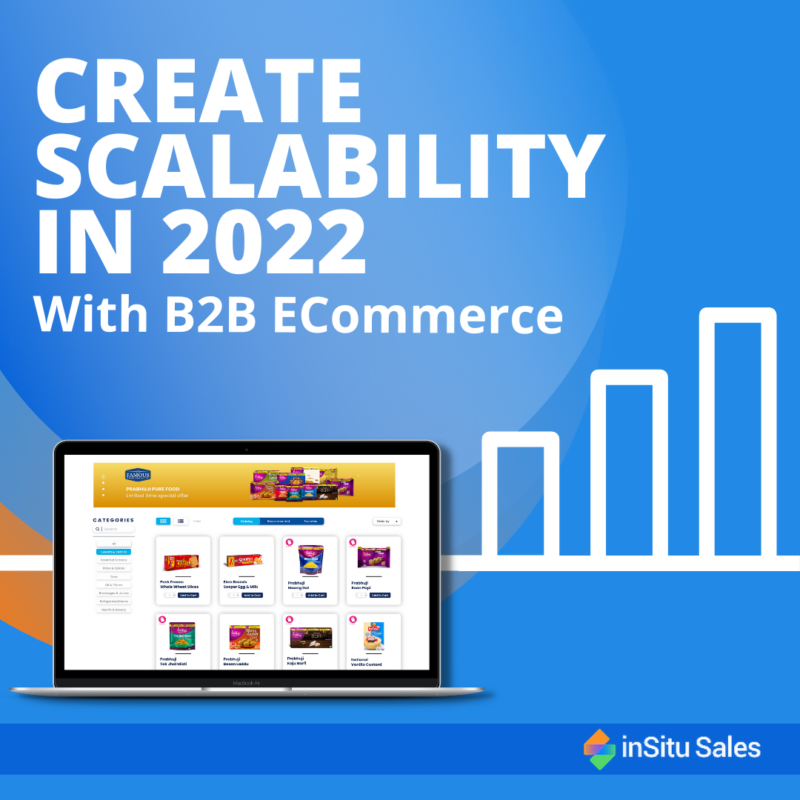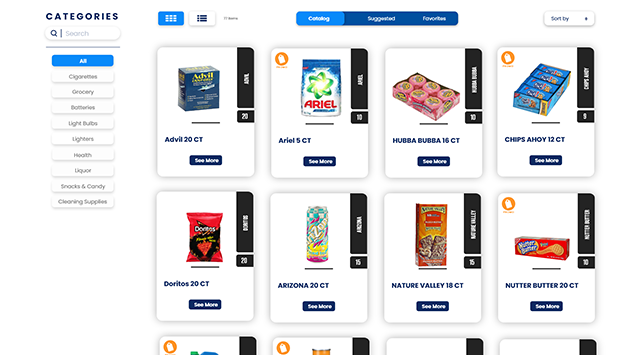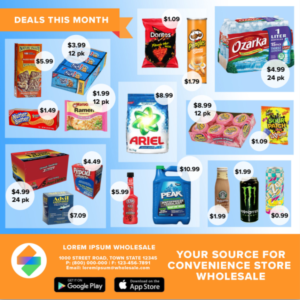
Top Factors For B2B eCommerce Driving Scalability In 2022
Many sales analysts at the start of 2021 attributed the emerging demand for B2B eCommerce to Coronavirus regulations and the resulting supply chain disruptions. While it’s important to note what began the industry wide changes, and what forced companies to re-evaluate their KPI for long-term sustainability, it’s much more important to understand ‘why‘ this became the solution to arising wholesale problems. It’s natural that all forms of sales cycles will continue to evolve towards reaching the most user friendly endpoint possible. Your role as a decision maker for your business is understanding what functions limit buyer incentive, and which serve to keep boosting interactions.
Is Your Wholesale Business Model Scalable?
What does it mean as a distributor or manufacturer to be ‘scalable?’ Reports from sales data may show positive revenue, with steadily increasing sales orders, a larger team to fulfill those requests, and perhaps even an expanding inventory, but those factors alone don’t paint an accurate picture for scalable growth. It’s natural to get swept up and form an anchoring bias (reliance on the first piece of information received to inform decisions) when operations are busier following initial observations of revenue, but only gross profit is capable of reflecting growth at scale. Increased size and workflow are already assumed in estimations, and don’t innately point to a successful model.
In order to be scalable, your business must:
- Be able to adapt to changing market demands
- Increase profit margins as demand from customers and orders grow
- Move towards automation and shorter processes

Optimizing operations at a smaller level simply to reduce expenses isn’t sufficient for a long-term growth plan. Beyond just minimizing wasted cost and overhead, it’s essential for businesses to build their priorities around the needs of the customer first. Customer loyalty is both harder to build, and to measure than straightforward operations accounting, making this a more complex metric for tracking that requires a consistent, proactive response.
Customer value and customer success are the two core goals for all businesses to establish, and that goalpost’s distance will rapidly increase the longer the market is offering features your business lacks. Customer value describes the implied benefits of your brand, while customer success visualizes their roadmap to a desired outcome through your brand. As outlined by Gartner’s study on implications in the B2B buying journey, your sales team only receives 17% of the time businesses allocate to purchasing to make an impact, the other 83% of their opinion will have already been made. Decision makers already integrated into the sales cycle may be at risk too, as 77% reported complications with their last order, creating huge opportunities for businesses catering to that need.
With this in mind, how many parts of the purchasing process are geared towards the convenience of the buyer? They might be ‘capable’ of purchasing online, but is it a unique experience enabling any form of continued response? This is why despite being an intangible metric, ‘adaptability’ remains one of the most vital indicators for the continued success of distributors and manufacturers moving into the globalized markets of 2022.
Common Pitfalls In B2B Sales
Despite the wide variations in model between manufacturers, wholesalers, and distributors, there are always common elements present when it comes to sales models. If your business has been active with sales these last few quarters that aren’t reflected in increasing profit margins or innovative new investments, consider if any of the following might be applicable:
- Too many manual processes required. Frameworks and technology used in the beginning of a company’s growth typically need to be phased out when demands and numbers increase beyond a certain point. Over time, a company’s goal should always be to make their sales cycle simpler and cost efficient, which usually means shifting to a degree of streamlined automation. Typically, companies unwilling to invest in a more automated cycle with fewer steps will reach a point where profits either stagnate or decline, or worse, are actually unable to accept new orders due to a cap on order processing.
- A weak sales conversion cycle. When a prospective buyer is interested in your product, they expect a clear and concise funnel directing them through a structured customer journey. While more common with smaller wholesalers, if the introduction to a purchase requires filling out a contact form with product info to be sent to a sales rep, it’s creating potential for churn that can’t be tracked and wasting reps times with unnecessary steps. Interactions in the conversion cycle should always be building you more customer data to work with, as well as minimizing rep activity to only stages after buyer intent is established.
- Lack of competitive value proposition. When B2B buyers shop around, their only concern is choosing an option that emphasizes benefits for their business. This is where your competitors will spend most of their time adapting and growing, always searching for new incentives to display value. If competitors are creating value through features you lack, it becomes near impossible to challenge them. Staying updated on market trends and popular features is the only way to keep growing with competitors in a changing industry.
- Tracking the wrong metrics (or none of them). One of the principles of growth is benchmarking progress. This means possessing a tangible understanding of where you’ve both succeeded, and failed. This is how we refine a sales formula over time to prioritize growth while avoiding costly mistakes. One of the biggest reasons B2B sales fail is due to chasing the wrong market, and if a sales rep can’t properly convey the need of a product, there’s no reliable way to find the ‘right market.’

The New B2B eCommerce Market
First, let’s consider how the market itself has grown over the years. Starting from the surge in 2020, the B2B eCommerce market size was valued at $6.64 trillion, and forecasts since then have predicted a compound annual growth rate (CAGR) of 18.7% from 2021 to 2028, finally settling at $25.5 trillion. Unfortunately, that rate of growth makes this less about potential benefits, and more about integrating out of necessity to hold onto customers.
One of the strongest B2B industry changes during Covid was the push towards self-service, and away from human interaction. The full extent of changes from Covid are shown in this McKinsey study on digital shifts in B2B selling models. We’ve seen a demonstrated staying power with digital purchasing, and it’s now overtaking both face to face, and phone call interactions by sales reps.
Integrating A Digital Self Serve Portal For Buyers
If you suspect your current sales model has hit a speed bump over one of the growth problems mentioned above, synchronizing traditional operations with digital components can produce huge results. Note that we intentionally avoided using the phrase ‘digital transformation’ when discussing our product. We understand the risks and challenges associated with restructuring a business as detailed as a distributor or manufacturer. At this time, investing in a complete digital shift is unrealistic for the majority of small-to medium sized B2B, leaving many in an uncomfortable situation for meeting customer demands.
The mission at inSitu Sales regarding eCommerce has always been a B2B portal that:
- Has an affordable, low cost entry point reducing risk and investment of resources.
- Monthly subscriptions at just $129.99, and free assisted implementation in under an hour guarantee the lowest pricing point, while still ensuring companies can start improving ROI right away.
- Allows automation for manual processes to save time and handle larger orders.
- Helps sales teams gather actionable customer insights through sales analytics data.
- Encourages sales reps to create custom list segmentation by product and pricing for personalized B2B catalog management.
- We offer an unlimited number of product and pricing lists to tailor customer shopping experience. This means reps could theoretically (and if necessary) create a unique order catalog for every business visiting the site.
- Can easily implement custom features at request to maximize unique value to your business
- Matching newer features of larger platforms is a priority, and we release free updates often. Our team also maintains flexibility in adding unique new customized features at the request of subscribers, for a small labor cost.
After subscribing to one of our licenses (on either a monthly or yearly basis), we offer free implementation to get you set up in under an hour to begin customizing your personalized eCommerce platform. Rather than replacing or substituting critical functions of sales reps, teams will simply be offering potential business buyers more options, while guiding them through a smoother checkout process that maximizes the potential for upsells and reorders.
